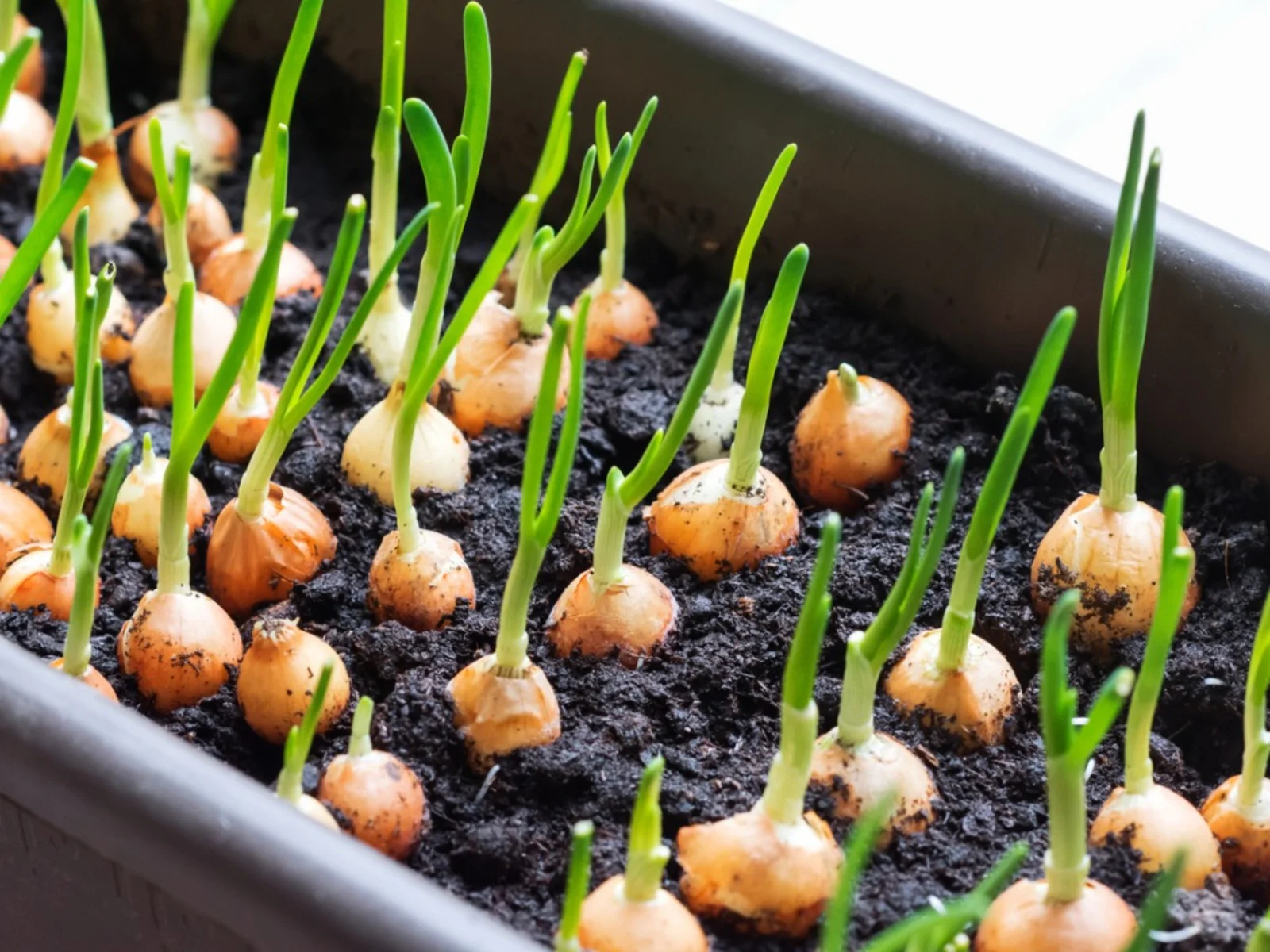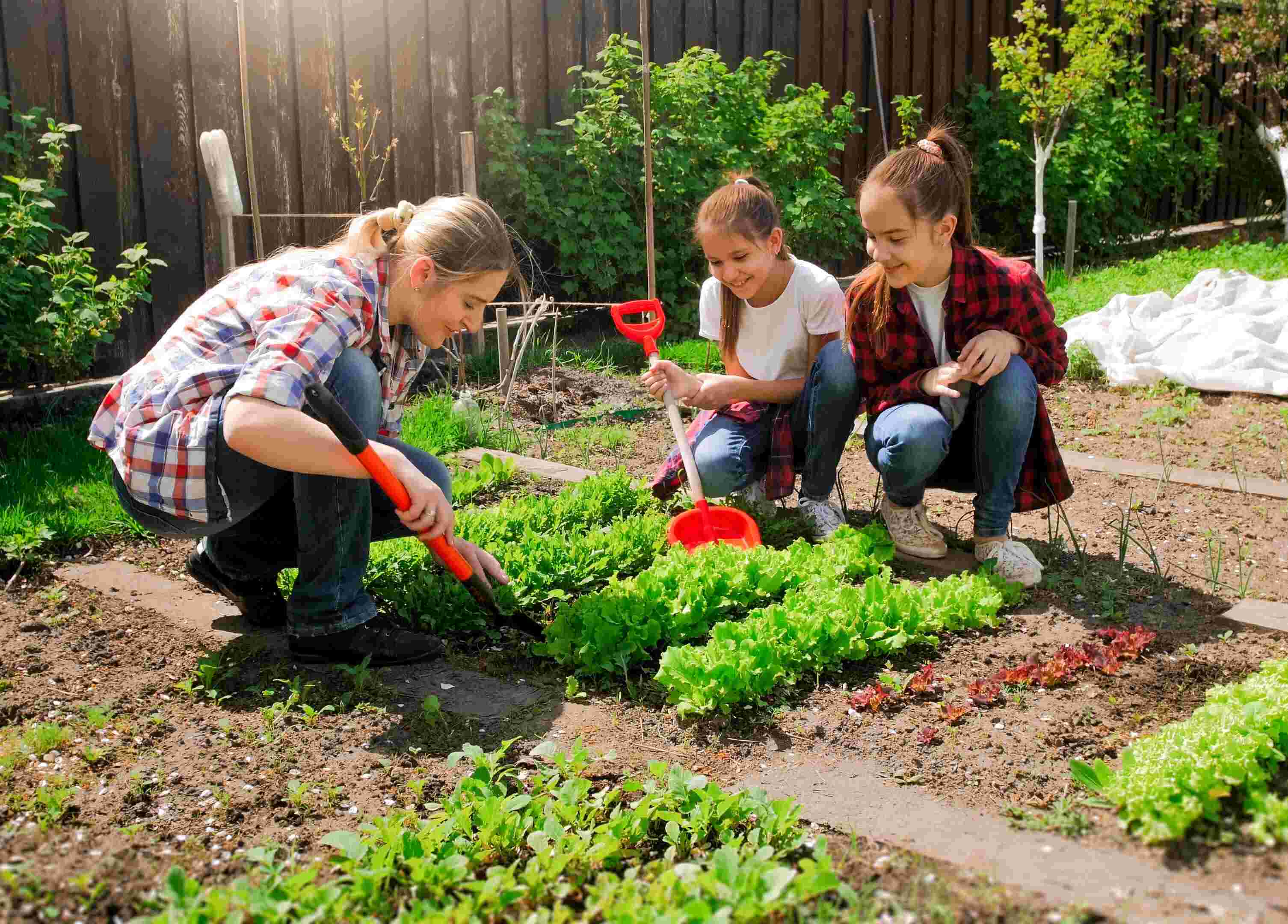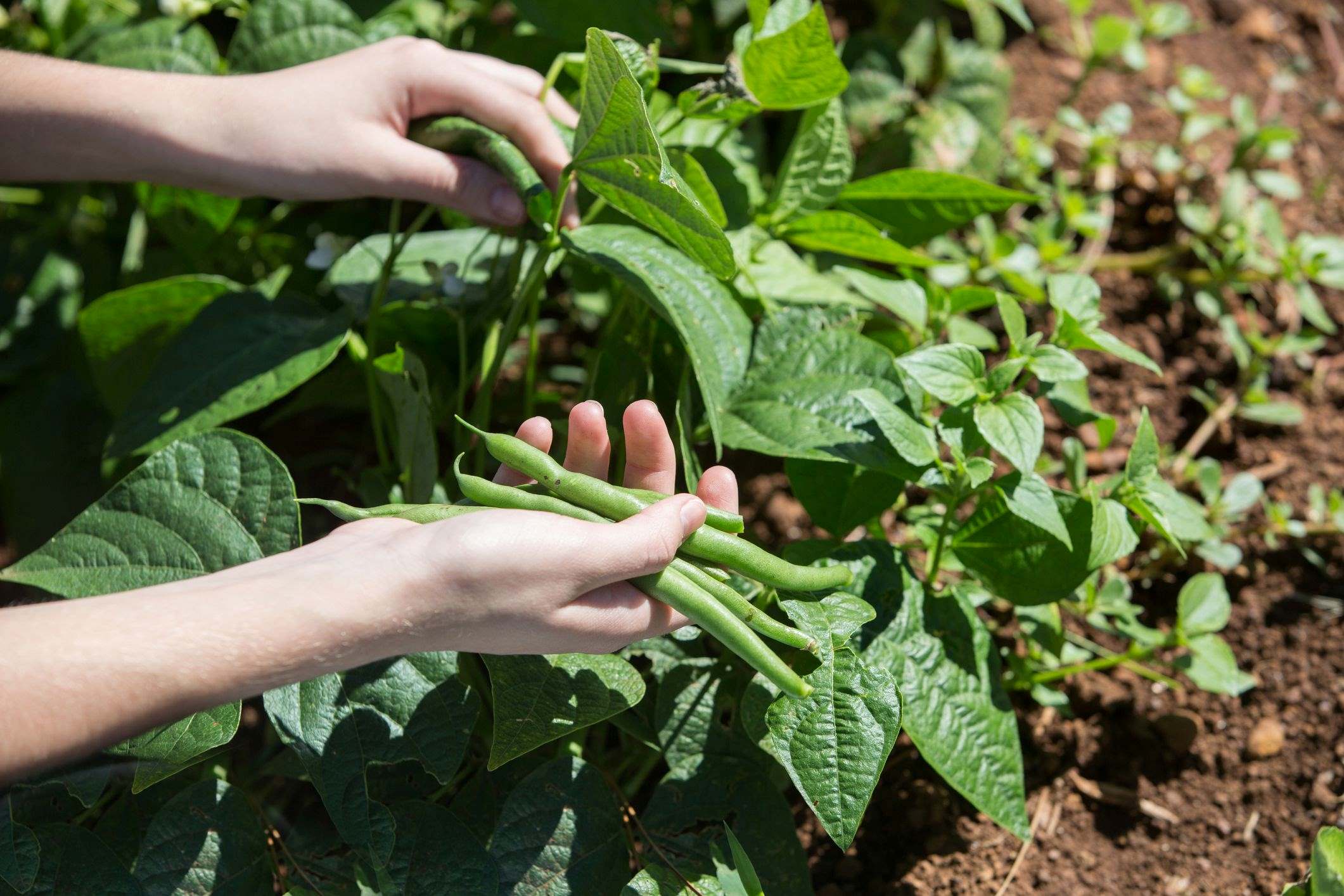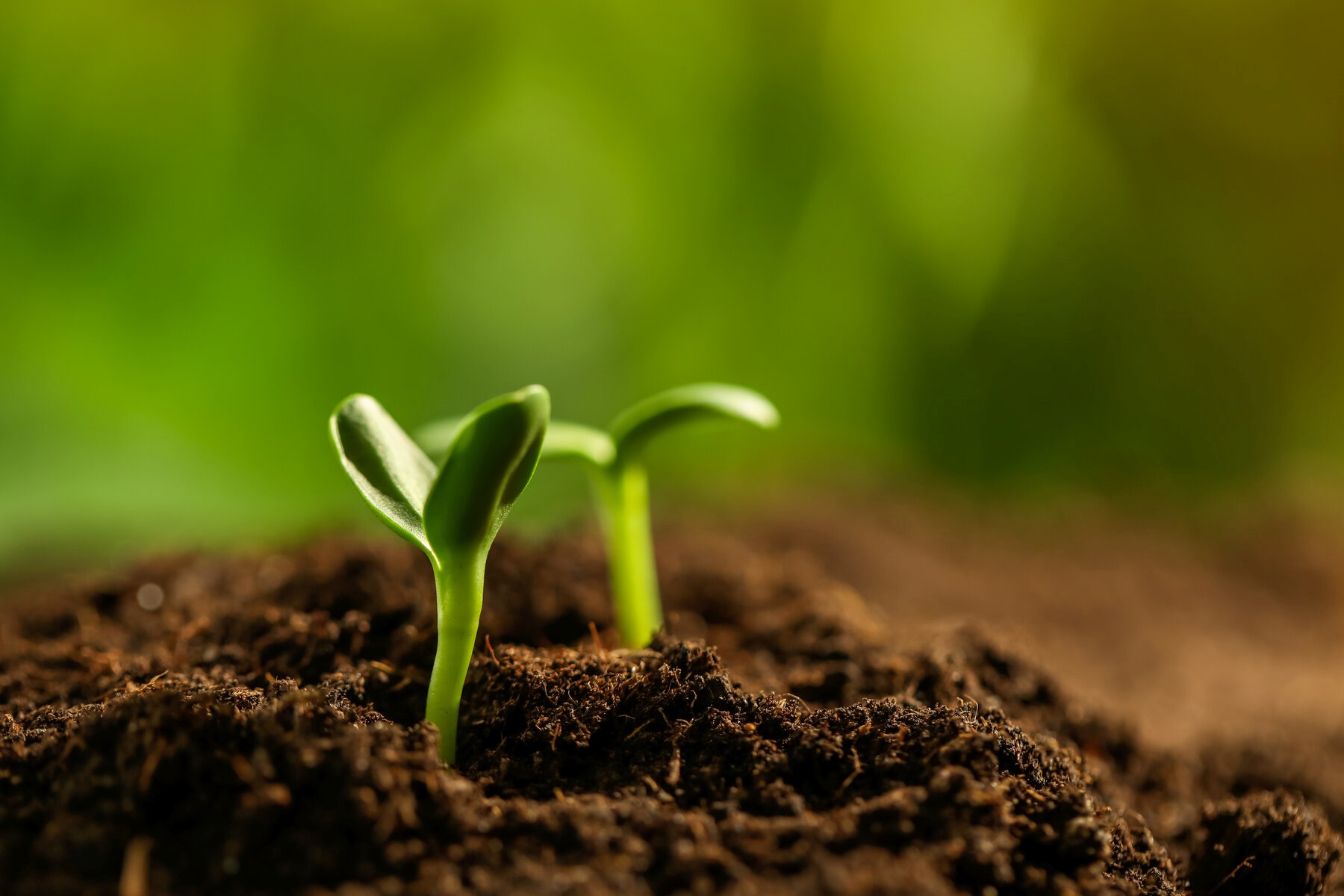Home>Gardening Basics>Getting Started>When To Start Planting Seeds In Michigan
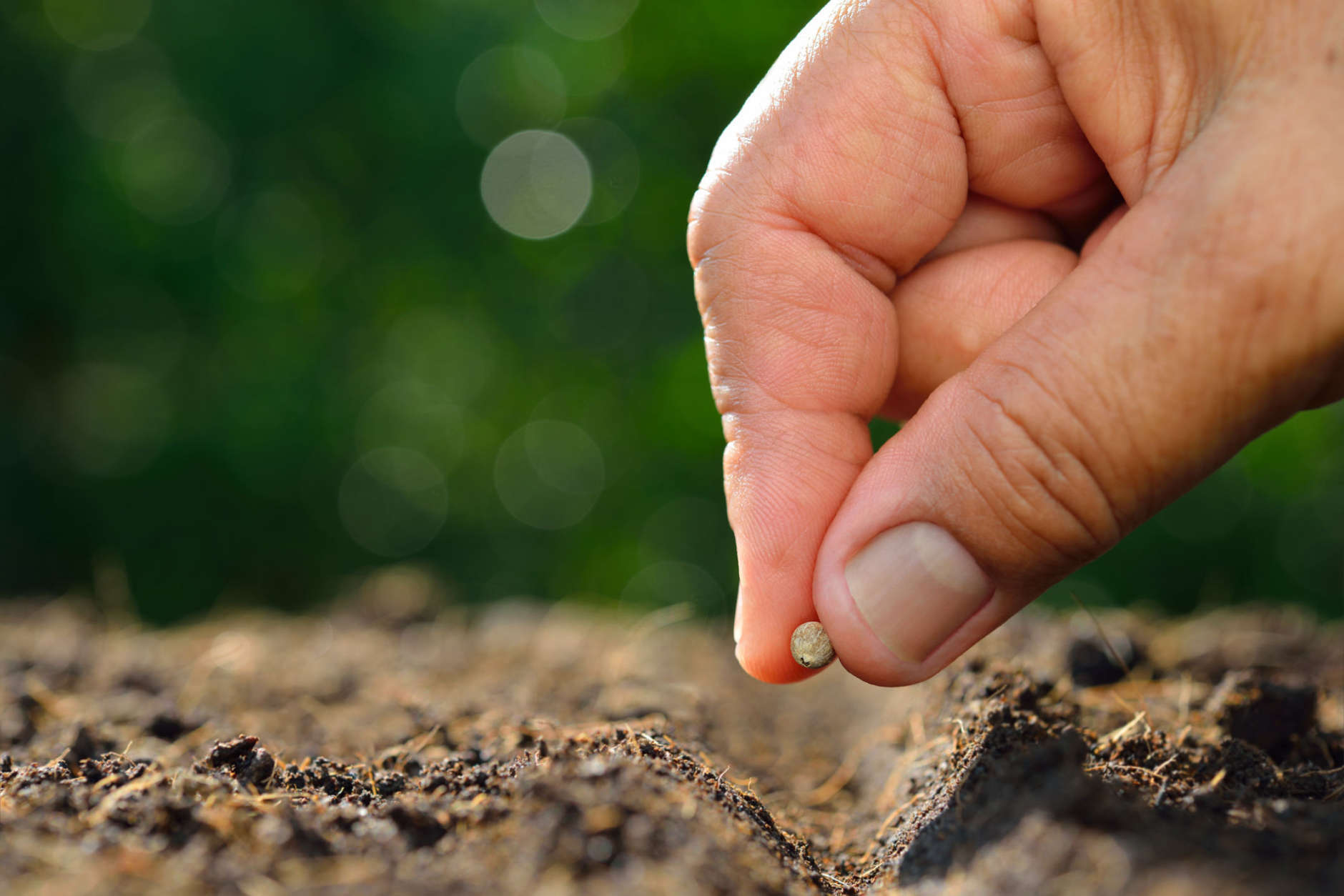

Getting Started
When To Start Planting Seeds In Michigan
Modified: February 9, 2024
Learn when to start planting seeds in Michigan and get your garden started right with our helpful tips and advice. Start your seeds at the optimal time to ensure a successful growing season.
(Many of the links in this article redirect to a specific reviewed product. Your purchase of these products through affiliate links helps to generate commission for Chicagolandgardening.com, at no extra cost. Learn more)
Table of Contents
Introduction
When it comes to gardening in Michigan, timing is everything. Knowing when to start planting seeds can make all the difference in the success of your garden. Whether you’re a seasoned gardener or a beginner looking to try your hand at growing your own vegetables, understanding Michigan’s unique climate and frost dates is crucial.
Michigan experiences a diverse range of weather conditions, from harsh winters to hot summers. As a result, it’s important to plan your planting schedule accordingly. By starting seeds at the right time, you can ensure that your plants have enough time to grow and thrive before the cold weather sets in.
In this article, we will discuss the ideal time to start planting seeds in Michigan, taking into account the last and first frost dates. We will also provide tips and techniques for starting seeds indoors and direct seeding outdoors, as well as advice on soil preparation and transplanting seedlings. By following these guidelines, you can maximize your chances of a successful harvest.
Whether you have a backyard garden, a small plot in a community garden, or just a few pots on your balcony, this guide will help you make the most of your gardening efforts in Michigan. So, let’s dive in and discover when to start planting seeds for a bountiful harvest!
Understanding Michigan’s Climate
Michigan’s climate is known for its variability, with distinct seasons that can pose challenges for gardeners. The state is located in the Great Lakes region, which has a significant impact on its weather patterns. Understanding Michigan’s climate is essential when it comes to knowing when to start planting seeds.
Michigan experiences cold winters with abundant snowfall, especially in the northern parts of the state. Average temperatures in January range from 24°F to 30°F (-4°C to -1°C) in the southern regions, while temperatures in the northern regions often drop below 0°F (-18°C).
Spring in Michigan can be unpredictable, with fluctuating temperatures and occasional late frosts. April and May are considered the transition months, with temperatures ranging from 40°F to 60°F (4°C to 15°C) in the southern regions and slightly cooler temperatures in the northern parts.
Summer in Michigan is generally warm and humid, with average temperatures in July and August ranging from 70°F to 80°F (21°C to 27°C) in the southern regions. However, northern parts may experience slightly cooler temperatures.
Autumn in Michigan brings cooler temperatures and colorful foliage, with average temperatures ranging from 50°F to 60°F (10°C to 15°C) in the southern regions. Northern parts of the state may experience cooler temperatures earlier in the season.
Michigan’s climate can vary significantly from year to year, influenced by factors such as El Niño and La Niña phenomena. These variations can affect the timing of the last frost in spring and the first frost in fall, which are crucial considerations when planning your seed planting schedule.
By understanding the climate patterns in Michigan and keeping an eye on weather forecasts, you can make informed decisions about when to start planting seeds and ensure the best possible conditions for your garden to thrive.
Frost Dates in Michigan
Frost dates are an important factor to consider when determining when to start planting seeds in Michigan. The last frost date in spring and the first frost date in fall provide crucial information about the optimal time to begin planting.
In Michigan, the last frost date generally occurs between mid-April and mid-May, depending on your specific location within the state. In the southern regions, such as Detroit and Grand Rapids, the average last frost date is around mid-April. However, in the northern regions, like Traverse City and Marquette, the last frost date can be as late as early May.
It’s important to note that the last frost date is not an absolute guarantee that frost won’t occur after that date. It’s merely an average estimation based on historical weather records. To be on the safe side, many gardeners wait a week or two after the last frost date before planting sensitive crops that are susceptible to cold damage.
The first frost date in Michigan usually falls between mid-September and mid-October. Again, the specific timing can vary depending on the region. The southern parts of the state typically experience the first frost in mid-October, while the northern regions may see the first frost as early as mid-September.
Knowing the average frost dates in your area can help you determine when it’s safe to plant frost-tolerant crops or when to take precautions to protect more sensitive plants from frost.
It’s worth mentioning that microclimates within Michigan can also impact frost dates. Factors such as proximity to water bodies, elevation, and wind patterns can create slight variations in temperature and frost occurrence. Monitoring local weather forecasts and consulting with experienced local gardeners can provide valuable insights into the specific conditions in your area.
By understanding the last and first frost dates in Michigan and considering the unique climate factors in your specific location, you can make informed decisions about when to start planting seeds and safeguard your garden against unexpected frosts.
Common Vegetables to Plant from Seeds
Planting vegetables from seeds is a cost-effective and rewarding way to start your garden in Michigan. While some vegetables are best grown from transplants, many can be directly sown from seeds. Here are some common vegetables that you can easily grow by planting seeds:
- Tomatoes: Tomatoes are a staple in many Michigan gardens. They can be started from seeds indoors 6-8 weeks before the last frost date. Choose from a wide variety of tomato cultivars, including cherry tomatoes, beefsteak, or heirloom varieties.
- Peppers: Whether you prefer sweet bell peppers or spicy chili peppers, these can be grown from seeds. Start them indoors 8-10 weeks before the last frost date and transplant them outdoors once the soil has warmed up.
- Cucumbers: Cucumbers thrive in the Michigan summer heat. Plant the seeds directly into the garden after all danger of frost has passed. Consider trellising them to save space and encourage straighter fruits.
- Beans: Both bush beans and pole beans can be grown from seeds. Plant them directly in the garden after the last frost date. Green beans, yellow beans, and purple beans are popular choices.
- Zucchini: Zucchini plants are prolific producers in Michigan. Start them from seeds indoors or sow them directly in the garden after the last frost date. Watch out for their rapid growth and be prepared to harvest zucchinis regularly.
- Lettuce: Leafy greens like lettuce can be grown from seeds throughout the growing season. Plant them directly in the garden and enjoy fresh salads all summer long. Consider succession planting for a continuous harvest.
These are just a few examples of the vegetables that you can easily grow from seeds in Michigan. Other popular choices include carrots, radishes, spinach, and herbs like basil and parsley.
When selecting seeds, take into consideration the specific cultivars that are recommended for the Michigan climate. Look for varieties that are adapted to your region and have a relatively short growing season to ensure a successful harvest.
Remember to follow the instructions on the seed packets regarding planting depth, spacing, and other requirements. With a little patience and care, you can enjoy the satisfaction of growing your own delicious and nutritious vegetables from seeds.
Starting Seeds Indoors
Starting seeds indoors is a great way to get a head start on the growing season in Michigan. It allows you to extend the growing period for certain crops and gives you more control over the environment in which your plants are started. Here’s how you can start seeds indoors:
1. Choose the right containers: Opt for seed trays, cell packs, or individual pots. Ensure that the containers have proper drainage holes to prevent waterlogging.
2. Select a good seed starting mix: Use a sterile, well-draining seed starting mix, which is lighter and fluffier than regular potting soil. Avoid using garden soil, as it may contain pests and diseases.
3. Sow the seeds: Follow the instructions on the seed packets regarding planting depth and spacing. Moisten the seed starting mix before planting to create a conducive environment for germination.
4. Provide adequate light: Place the seed trays in a sunny spot near a south-facing window or use fluorescent lights or grow lights. Aim for 14-16 hours of light per day to ensure healthy seedling growth.
5. Maintain temperature and humidity: Most seeds require a temperature of around 70°F (21°C) for germination. Use a heating mat or keep the seed trays in a warm area. Covering the trays with plastic wrap or a clear dome can help maintain humidity levels.
6. Water carefully: Keep the seed starting mix evenly moist, but avoid overwatering, as it can lead to fungal diseases. Use a misting spray bottle or a watering can with a fine nozzle to water gently.
7. Thin out seedlings: Once the seedlings have a few true leaves, thin them out to ensure proper spacing. Remove the weaker seedlings, keeping only the strongest ones. This will promote healthier growth and prevent overcrowding.
8. Harden off: Before transplanting the seedlings outdoors, gradually expose them to outdoor conditions over a period of 7-10 days. Start with a few hours of outdoor time each day, gradually increasing the duration and intensity of exposure.
Starting seeds indoors allows you to grow a wider variety of crops and gives you a head start on the growing season. It also helps mitigate the risk of late spring frosts, which can be detrimental to young seedlings. By following these steps and providing optimal care, you’ll be rewarded with strong and healthy seedlings ready for transplanting into your garden.
Direct Seeding Outdoors
Direct seeding outdoors is a common method of planting seeds in Michigan. It involves sowing seeds directly into the garden soil, bypassing the need for starting seeds indoors. Here are some tips for successful direct seeding:
1. Determine the optimal timing: Wait until after the last frost date in your area before direct seeding. The soil should be sufficiently warmed up, usually when the temperature consistently reaches 50°F (10°C) or above.
2. Prepare the soil: Make sure the soil is well-draining and free of clumps and debris. Loosen the soil to a depth of 6-8 inches and remove any weeds or rocks.
3. Read seed packet instructions: Different vegetables have different requirements for planting depth and spacing. Refer to the seed packet instructions to determine the appropriate guidelines for each crop.
4. Make furrows or holes: Use a small garden trowel or your finger to create furrows or individual holes for the seeds. The depth of the furrows or holes will depend on the specific plant’s requirements.
5. Sow the seeds: Place the seeds in the furrows or holes, following the recommended spacing. It’s a good practice to sow a few extra seeds to account for potential low germination rates.
6. Cover and label: Gently cover the seeds with soil, making sure they are adequately covered but not buried too deep. Place markers or labels to identify the planted rows or areas.
7. Water gently: Use a watering can with a gentle spray nozzle or a misting spray bottle to water the area after planting. Be careful not to displace the seeds or create soil erosion.
8. Provide proper care: Keep the soil evenly moist, but be cautious not to overwater, as it can lead to waterlogged conditions and promote the growth of fungal diseases. Regularly monitor the soil moisture and adjust watering accordingly.
9. Thin out seedlings: Once the seedlings emerge and establish themselves, thin them out to maintain proper spacing. Remove the weaker seedlings, leaving only the strongest ones to grow and thrive.
10. Protect from pests: Cover the newly planted area with row covers or use natural pest deterrents to protect the emerging seedlings from pests such as birds, rabbits, or slugs.
Direct seeding outdoors can be an efficient and straightforward method for growing vegetables in your garden. Just ensure that you follow the recommended timings, provide proper care, and protect the emerging plants from potential threats. With patience and diligence, you’ll soon see your seeds sprout and grow into healthy and productive plants.
Soil Preparation
Proper soil preparation is essential for successful gardening in Michigan. The quality of your soil directly affects the growth and productivity of your plants. Here are some steps to prepare your soil for planting seeds:
1. Test your soil: Before planting, it’s helpful to test your soil to determine its pH level and nutrient composition. Home soil test kits are available at garden centers or you can send a sample to a soil testing laboratory for a detailed analysis.
2. Amend the soil: Based on the results of your soil test, amend the soil to improve its fertility and structure. Adding organic matter such as compost, well-rotted manure, or leaf mold can enhance nutrient content and enhance soil structure.
3. Remove weeds: Clear the area of any weeds or grasses to prevent competition with your seedlings. You can manually remove them or use a garden tool like a hoe to loosen and remove the unwanted vegetation.
4. Loosen the soil: Use a garden fork or a tiller to loosen the top layer of soil. Avoid excessive tilling, as it can disrupt the natural structure of the soil and harm beneficial organisms. Aim to create a loose and friable soil texture.
5. Add soil amendments: Based on the soil test results, you may need to add specific amendments to balance pH levels or supplement nutrients. Lime can be added to raise the pH if it is too acidic, while sulfur or peat moss can be added to lower pH if it is too alkaline.
6. Incorporate organic matter: Mix in a generous amount of organic matter, such as compost or aged manure, into the top layer of soil. This improves soil structure, enhances drainage, and adds valuable nutrients for plant growth.
7. Level the soil: Rake the soil surface to create a smooth and level planting bed. This will facilitate even seed germination and ensure proper moisture distribution throughout the soil.
8. Mulch the soil: Once you’ve planted your seeds, apply a layer of organic mulch, such as straw or wood chips, to help conserve moisture, suppress weed growth, and regulate soil temperature.
9. Practice crop rotation: To prevent the buildup of pests and diseases, rotate your crops each year. Avoid planting the same family of vegetables in the same spot consecutively. This helps maintain soil health and reduce the risk of plant-specific issues.
By investing time and effort into properly preparing your soil, you create an ideal environment for your seeds to germinate and grow. Good soil structure, proper nutrient levels, and balanced pH will promote healthy plant development and increase your chances of a successful harvest.
Seed Starting Tips and Techniques
Starting seeds is an exciting and rewarding way to kick-start your garden. To maximize your success, here are some valuable tips and techniques to follow when starting seeds:
1. Read seed packet instructions: Each seed has different requirements for planting depth, spacing, and germination conditions. Carefully read the instructions provided on the seed packet and follow them accordingly.
2. Use fresh, high-quality seeds: Ensure that you are using fresh seeds that have been stored properly. Old or low-quality seeds may have low germination rates, so it’s best to purchase seeds from reputable sources.
3. Label your containers: Label your seed containers with the name of the plant and the planting date. This will help you keep track of the progress of each seedling and ensure proper care and maintenance.
4. Provide adequate light: Seeds require proper light to germinate and develop into healthy seedlings. Place your seed trays near a south-facing window or use fluorescent lights or grow lights to provide 14-16 hours of light per day.
5. Maintain the right temperature: Most seeds require a consistent temperature between 65°F and 75°F (18°C and 24°C) for the best germination. Utilize a heating mat or ensure that the room temperature remains within this range.
6. Water carefully: Keep the seed starting mix evenly moist but avoid overwatering. Use a misting spray bottle or a watering can with a fine nozzle to provide a gentle and consistent amount of moisture.
7. Thin out seedlings: Once the seedlings have emerged and developed their first set of true leaves, thin them out to prevent overcrowding. Remove the weaker seedlings, leaving the strongest ones with enough space to grow and thrive.
8. Harden off seedlings before transplanting: Gradually acclimate your seedlings to outdoor conditions before transplanting them into the garden. Start by exposing them to a few hours of outdoor time each day, gradually increasing the duration over a week or so.
9. Transplant carefully: When it’s time to transplant your seedlings into the garden, handle them gently to avoid damaging their delicate roots. Dig a hole slightly larger than the root ball and ensure that the soil is adequately moist.
10. Keep a seed starting schedule: Maintain a seed starting schedule based on your local frost dates and the recommended timing for each vegetable. This will help you stay organized and ensure that you start seeds at the right time for a successful garden.
By following these seed starting tips and techniques, you set yourself up for success in your gardening endeavors. With proper care and attention, your seedlings will thrive and grow into healthy plants ready for transplanting into your garden.
Transplanting Seedlings
Transplanting seedlings is a crucial step in the journey of your garden. It involves moving seed-grown plants from their indoor containers or seed trays into the prepared garden soil. Proper transplanting techniques will help ensure the successful establishment and growth of your young plants. Here are some tips to follow when transplanting seedlings:
1. Timing is key: Choose the right time to transplant your seedlings. Wait until after the last frost date in your area and when the soil has sufficiently warmed up. This will minimize the risk of cold damage to your young plants.
2. Prepare the planting hole: Dig a hole that is slightly larger than the root ball of the seedling. Gently loosen the soil and remove any weeds or debris from the area.
3. Handle with care: Be gentle when handling the seedlings to avoid damaging their delicate roots or stems. Hold the seedling by the leaves, not the stem, to prevent injury.
4. Water the seedlings: Before transplanting, thoroughly water the seedlings to ensure that the root ball is adequately moist. This will help minimize transplant shock and promote a smooth transition.
5. Plant at the proper depth: Plant the seedlings at the same depth as they were in their original containers or seed trays. Avoid burying the stem too deep, as it may lead to rotting, but ensure that the top of the root ball is level with the soil surface.
6. Backfill and firm the soil: Gently backfill the hole with soil around the root ball, pressing it lightly to eliminate air gaps. Ensure that the seedling is securely positioned in the soil.
7. Water thoroughly: After transplanting, water the seedlings again, ensuring that the surrounding soil is adequately moist. This will help settle the soil around the roots and provide initial hydration to support growth.
8. Provide shade or protection: If the weather is particularly hot or sunny, provide temporary shade or protection to prevent stress or sunburn on the newly transplanted seedlings. Use shade cloth, row covers, or homemade shelters for this purpose.
9. Monitor and adjust: Keep a close eye on your transplanted seedlings over the next few days to ensure they are adjusting well. If needed, provide additional water, protection, or support as they acclimate to their new surroundings.
10. Mulch and maintain: Apply a layer of organic mulch, such as straw or woodchips, around the base of the transplanted seedlings. This will help conserve moisture, suppress weeds, and regulate soil temperature.
By following these transplanting tips, you give your seedlings the best chance at success. With proper care and attention, they will establish themselves in the garden and continue to grow into healthy, productive plants.
Recommended Seed Starting Schedule for Michigan
Having a well-planned seed starting schedule is essential for a successful garden in Michigan. By starting seeds at the right time, you can ensure that your plants have enough time to grow and thrive before the frost sets in or the summer heat becomes too intense. Here is a recommended seed starting schedule for Michigan:
Early February: Start seeds of slow-growing crops such as onions, leeks, and celery indoors. These plants require a longer growing season and benefit from an early start.
Mid to Late February: Begin sowing seeds of cold-hardy vegetables like kale, broccoli, cauliflower, and Brussels sprouts indoors. These crops can tolerate cooler temperatures and are ideal for early spring planting.
Early March: Start seeds of peppers, tomatoes, and eggplants indoors. These warm-season crops require a longer growing period and are typically transplanted outdoors after the last frost date when the soil has sufficiently warmed up.
Mid to Late March: Begin sowing seeds of fast-growing vegetables like lettuce, spinach, radishes, and arugula. These crops can tolerate cooler temperatures and are great for early spring salads.
Early to Mid-April: Start seeds of beans, cucumbers, squash, and melons indoors. These warm-season crops cannot tolerate frost and should only be transplanted outside when all danger of frost has passed.
Mid-April to Early May: Sow seeds directly outdoors of fast-growing cool-season crops such as peas, carrots, beets, and radishes. These crops can be directly sown into the garden once the soil has warmed up and the risk of frost has passed.
Mid-May to Early June: Direct seed warm-season crops like corn, pumpkins, and beans into the garden. These plants require warmer temperatures to germinate and grow successfully.
Remember: The recommended seed starting dates can vary depending on your specific location in Michigan. Factor in your local frost dates and consider the microclimate conditions in your garden, as they may influence the optimal planting times for your area.
Additionally, it’s important to regularly check weather forecasts and be prepared to protect your young plants from late spring frosts or unexpected cold snaps. Using season extenders like cloches or row covers can help keep your plants safe during temperature fluctuations.
A well-planned seed starting schedule will allow you to take full advantage of Michigan’s growing season and maximize the potential of your garden. With careful planning and timely seeding, you’ll be on your way to a successful harvest!
Conclusion
Gardening in Michigan can be a rewarding experience, but it requires careful planning and timing, especially when it comes to starting seeds. By understanding Michigan’s climate, frost dates, and following recommended seed starting practices, you can set yourself up for success in your garden.
Michigan’s diverse climate presents unique challenges and opportunities for gardeners. From cold winters to hot summers, knowing the optimal planting times for seeds is crucial. By starting seeds indoors or direct seeding outdoors at the right time, you can ensure that your plants have adequate time to grow and produce a bountiful harvest.
Understanding the frost dates in Michigan is key to timing your seed planting. By knowing when the last frost occurs in spring and the first frost in fall, you can make informed decisions about when to start your seeds and protect young plants from potential cold damage.
Whether you choose to start seeds indoors or direct seed outdoors, proper soil preparation is essential. Amending the soil with organic matter, removing weeds, and creating a suitable planting environment will contribute to the health and productivity of your garden.
By following seed starting tips and techniques, such as providing adequate light, maintaining proper temperature and humidity, and practicing careful watering, you can ensure the successful germination and growth of your seeds into robust seedlings.
When it’s time to transplant your seedlings, handling them with care, planting at the right depth, and providing proper aftercare will help them establish in the garden and thrive. Additionally, following a recommended seed starting schedule, adjusted for your specific location, will maximize the potential of your garden’s growing season.
In conclusion, by understanding Michigan’s climate, frost dates, and following recommended seed starting practices, you can increase the success of your garden. With proper planning, care, and attention, you’ll be rewarded with a plentiful harvest of delicious, homegrown vegetables to enjoy throughout the season.



